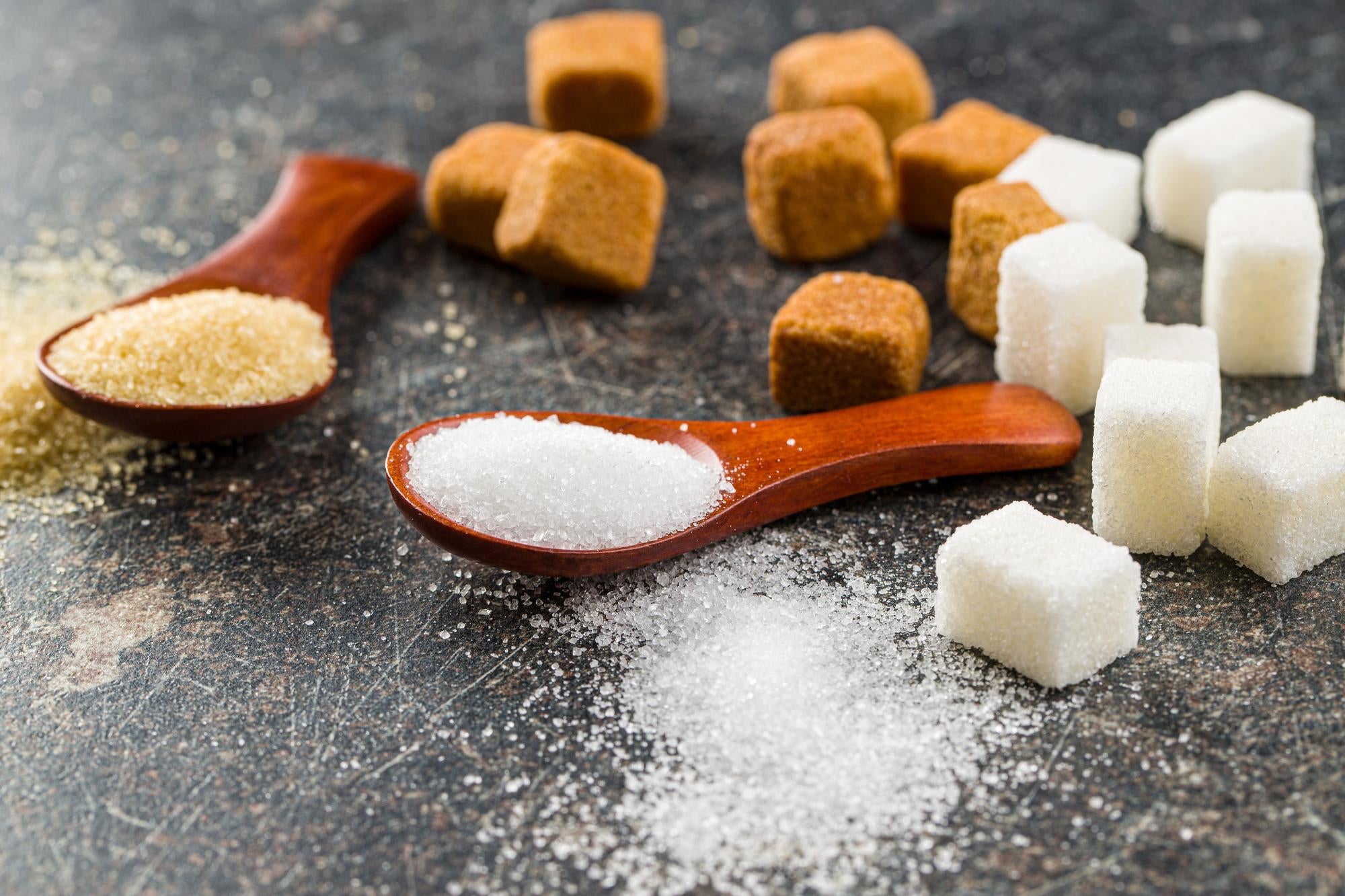Ways to determine between Sugar beet vs sugar cane for your business
Wiki Article
Understanding Sugar Beet Vs Sugar Cane: a Deep Study Their Processing and Applications
The comparison between sugar beet and sugar cane reveals vital differences in their processing and usage. Each crop has unique farming techniques that affect its geographic circulation. Sugar beetroots are primarily processed right into granulated sugar for various food items, while sugar cane is commonly used in drinks. Recognizing these differences drops light on their functions in the food sector and their economic relevance. Yet, the broader implications of their growing and handling warrant more expedition.Introduction of Sugar Beet and Sugar Cane
Sugar beet and sugar cane are two main resources of sucrose, each adding considerably to the global sugar supply. Sugar beet is a root vegetable, typically gathered in cooler environments, while sugar cane is a tall yard that grows in warmer tropical and subtropical areas. The handling of sugar beet includes washing, slicing, and removing juice, adhered to by filtration and crystallization. In contrast, sugar cane handling includes squashing the stalks to draw out juice, which is after that cleared up and concentrated right into sugar crystals.Both crops are rich in sucrose, but their structure varies somewhat, with sugar cane normally having a greater sugar web content. Each source additionally plays a function in biofuel manufacturing, with sugar beet typically utilized for ethanol. While both are vital for numerous applications, their unique development needs and processing methods affect their respective payments to the sugar market.
Geographical Distribution and Cultivation Problems
Sugar beet and sugar cane are cultivated in distinctive geographic areas, affected by their details climate and soil needs. Sugar cane thrives in tropical environments, while sugar beet is much better fit for temperate zones with cooler temperature levels. Comprehending these cultivation conditions is essential for enhancing production and making certain quality in both plants.Global Expanding Areas
While both sugar beet and sugar cane are vital resources of sugar, their worldwide expanding regions vary noticeably due to climate and dirt requirements. Sugar beet grows primarily in warm regions, with substantial production focused in Europe, The United States And Canada, and parts of Asia. These locations generally feature well-drained, abundant dirts that support the crop's development cycle. In comparison, sugar cane is mostly grown in exotic and subtropical regions, with major production centers located in Brazil, India, China, and Thailand. This plant embellishments in warm, damp settings that facilitate its development. The geographical distribution of these two plants highlights the versatility of sugar cane to warmer climates, while sugar beet stays dependent on cooler, pleasant conditions for peak growth.Climate Demands
The environment demands for sugar beet and sugar cane vary significantly, mirroring their adjustment to distinct ecological problems. Sugar beet thrives in temperate environments, calling for awesome to mild temperatures, ideally ranging from 15 ° C to 20 ° C. It is sensitive to frost and take advantage of well-distributed rains throughout its growing season. This plant is generally cultivated in regions such as Europe and The United States And Canada.Conversely, sugar cane embellishments in exotic and subtropical environments, favoring warmer temperatures between 20 ° C and 30 ° C - Sugar beet vs sugar cane. It requires plentiful sunlight and consistent rainfall, making it appropriate to areas like Brazil, India, and Southeast Asia. The contrasting climate choices of these plants significantly influence their geographic distribution and agricultural practices
Dirt Preferences
Both sugar beet and sugar cane call for certain soil conditions to thrive, their choices vary considerably. Sugar beets thrive in well-drained, loamy dirts rich in raw material, with a pH ranging from 6.0 to 7.5. These conditions are typically found in temperate areas, particularly in Europe and The United States And Canada. In comparison, sugar cane chooses deep, fertile dirts with outstanding drainage and a somewhat acidic to neutral pH (6.0 to 7.0) This plant is mainly cultivated in exotic and subtropical climates, such as Brazil, India, and Australia. The geographic distribution of these plants reflects their dirt choices, as sugar beets are matched for cooler climates, while sugar cane thrives in warmer, a lot more humid settings.Gathering and Handling Techniques
In examining the harvesting and processing strategies for sugar beet and sugar cane, distinct approaches emerge for each plant. The comparison of collecting methods exposes variants in effectiveness and labor demands, while extraction methods highlight distinctions in the initial processing phases. Additionally, recognizing the refining processes is essential for examining the top quality and return of sugar generated from these two sources.Collecting Techniques Contrast
When considering the gathering approaches for sugar beet and sugar cane, distinctive techniques emerge that mirror the unique attributes of each plant. Sugar beet gathering usually involves mechanical methods, making use of specialized farmers that uproot the beetroots from the ground, eliminating tops and soil in the procedure. This strategy allows for effective collection and lessens plant damage. On the other hand, sugar cane harvesting can be either hands-on or mechanical. Hands-on harvesting involves workers cutting the stalks short, while mechanical harvesting makes use of huge devices that reduced, cut, and accumulate the cane in one operation. These differences in gathering approaches highlight the flexibility of each plant to its growing environment and the farming techniques widespread in their respective regions.Extraction Techniques Summary
Extraction methods for sugar production vary significantly between sugar beet and sugar cane, mirroring their unique attributes and handling demands. Sugar beets are normally collected utilizing mechanical farmers that reduced the roots from the ground, followed by cleaning to get rid of dirt. The beetroots are after that cut right into slices, known as cossettes, to facilitate the extraction of sugar via diffusion or warm water removal. In comparison, sugar cane is normally gathered by hand or maker, with the stalks reduced close to the ground. After gathering, sugar cane undergoes crushing to remove juice, which is after that cleared up and concentrated. These removal techniques highlight the distinctive strategies used based on the resource plant's physical qualities and the desired performance of sugar removal.Refining Processes Clarified
Refining processes for sugar from both sugar beet and sugar cane include a number of necessary steps that assure the end product is pure and appropriate for intake. At first, the raw juice removed from either source undertakes clarification, where contaminations are removed making use of lime and heat. Following this, the juice is evaporated to focus the click for more info sugars. For sugar beetroots, the process usually includes carbonatation, while sugar cane might undergo a much more uncomplicated condensation approach. Once concentrated, the syrup is subjected to formation, generating raw sugar. The raw sugar is detoxified through centrifugation and more refining, resulting in the white granulated sugar commonly discovered on shop racks. Each step is vital in making certain product high quality and safety and security for consumers.
Nutritional Profiles and Health And Wellness Impacts

Health and wellness influences connected with both sources largely stem from their high sugar content. Extreme intake of sucrose from either source can bring about weight gain, oral concerns, and boosted threat of persistent conditions such as diabetes mellitus and heart condition. Sugar cane juice, usually eaten in its natural form, might supply additional anti-oxidants and phytonutrients contrasted to polished sugar beet items. Eventually, moderation is essential in utilizing both sugar beet and sugar cane in diet regimens to alleviate potential health and wellness dangers.
Economic Relevance and Worldwide Production
The financial significance of sugar beet and sugar cane is significant, considering that both crops play vital roles in the international farming landscape. Sugar cane, primarily grown in tropical and subtropical areas, represent approximately 75% of the globe's sugar production. Countries like Brazil and India are leading manufacturers, contributing substantially to their nationwide economies via exports and regional intake.
The global sugar market is valued at billions of bucks, affected by various factors including climate, profession plans, and customer demand. Accordingly, both sugar beet and sugar cane are vital for financial security and growth within the agricultural market worldwide.
Applications in the Food Market
In the food sector, sugar beet and sugar cane offer he has a good point essential functions, giving sweeteners that are essential to a vast array of products. Both resources produce granulated sugar, which is a primary component in baked products, drinks, and confections. Sugar beet, frequently liked in areas with cooler environments, is typically discovered in processed foods such as jams, jellies, and dairy items. Sugar cane is favored in tropical regions and is often used in beverages like rum and soft drinks.Beyond granulated sugar, both sources are also processed into molasses, syrups, and other sweeteners, enhancing taste accounts and boosting appearance in numerous applications. In addition, the byproducts of sugar manufacturing, such as pulp and bagasse, are made use of in creating animal feed and biofuels, additionally showing their versatility. Overall, sugar beet and sugar cane are vital elements of the food market, influencing preference, appearance, and general item top quality.
Ecological Considerations and Sustainability
As concerns about environment adjustment and resource depletion expand, the ecological effect of sugar beet and sugar cane farming has come under analysis. Sugar cane, usually expanded in tropical areas, can bring about logging and habitat loss, exacerbating biodiversity decrease. Furthermore, its cultivation regularly relies upon extensive water usage and chemical fertilizers, which can pollute neighborhood waterways.Conversely, sugar beet is commonly grown in temperate environments and might advertise soil health through plant turning. Nevertheless, it more likewise faces obstacles such as high water intake and dependence on pesticides.
Both plants add to greenhouse gas discharges during processing, however lasting farming techniques are emerging in both markets. These consist of precision agriculture, natural farming, and incorporated bug management. Generally, the environmental sustainability of sugar manufacturing continues to be a pushing concern, necessitating continuous evaluation and fostering of eco-friendly methods to minimize adverse effects on environments and neighborhoods.

Regularly Asked Concerns
What Are the Distinctions in Taste In Between Sugar Beet and Sugar Cane?
The preference distinctions between sugar beet and sugar cane are refined yet distinct. Sugar beet has a tendency to have a somewhat earthier taste, while sugar cane uses a sweeter, extra fragrant account, interesting numerous cooking choices.Can Sugar Beet and Sugar Cane Be Made Use Of Mutually in Recipes?
Sugar beet and sugar cane can commonly be used mutually in dishes, though refined distinctions in flavor and texture may occur. Substituting one for the various other generally keeps the desired sweetness in culinary applications.
What By-Products Are Produced From Sugar Beet and Sugar Cane Handling?
The processing of sugar beets and sugar cane returns numerous spin-offs. These include molasses, pet feed, and biofuels. Each spin-off offers distinctive purposes, adding to farming and commercial applications past the main sugar removal.How Do Sugar Beet and Sugar Cane Affect Soil Health?
The influence of sugar beet and sugar cane on soil health and wellness differs; sugar beets can enhance organic issue, while sugar cane might cause soil destruction if not managed properly, affecting nutrient degrees and dirt framework.Exist Details Selections of Sugar Beet and Sugar Cane?
Different certain selections of sugar beet and sugar cane exist, each adapted to various environments and soil kinds. These selections are cultivated for characteristics such as yield, illness resistance, and sugar material, optimizing farming productivity.Report this wiki page